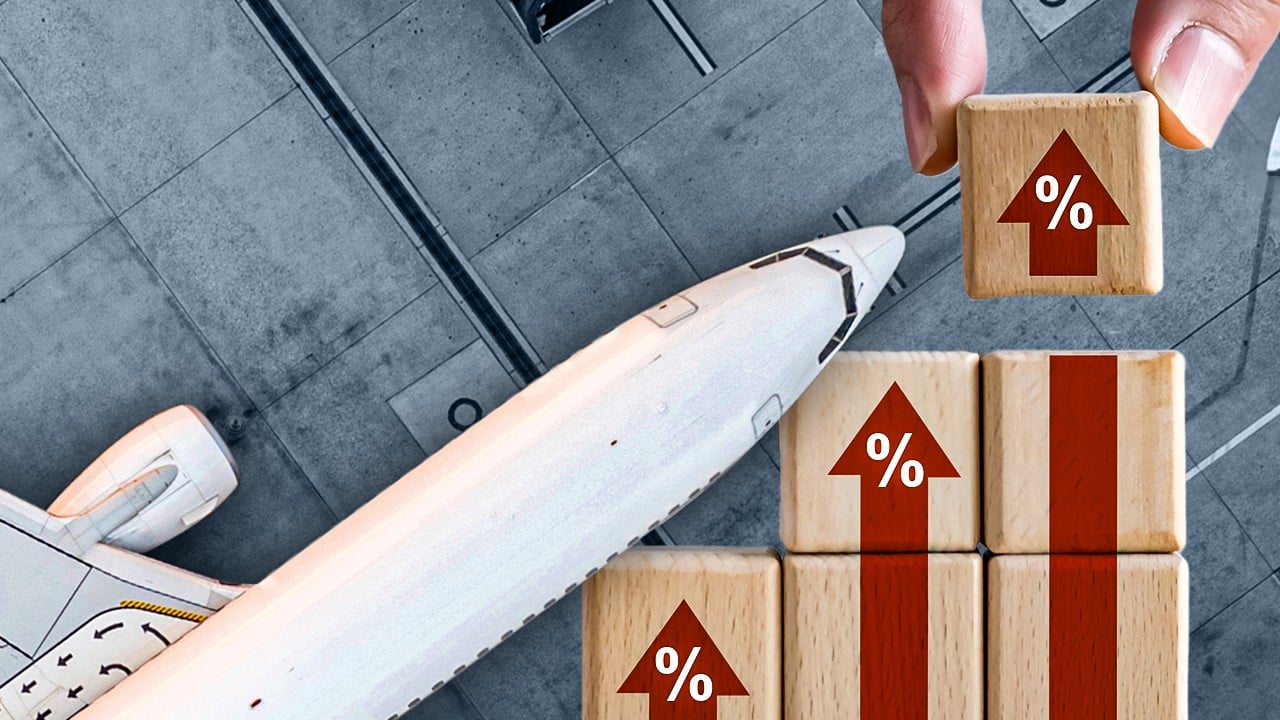
Earnings for Hong Kong’s Cathay Pacific soar to HK$4.3 billion in first half of 2023, with share buy-back from government on horizon
- Cathay chairman Patrick Healy says results show airline is ‘on the right track’
- He says Cathay plans to buy back 50 per cent of preference shares the government acquired as part of recapitalisation package in 2020
The figures released on Wednesday represented a turnaround in performance for the airline and prompted Cathay to announce that it planned to buy back company shares held by the Hong Kong government and purchase up to 32 Airbus aircraft.
“We’ve been cash generative for the whole of 2023 and we’re extremely pleased with the performance year to date. We expect to continue to see a solid performance throughout the rest of the year,” Cathay Pacific Group chairman Patrick Healy said.
Analysts also described the data as “encouraging” for the city’s flag carrier and a far cry from the same period last year, when Cathay racked up HK$4.99 billion in losses as Hong Kong maintained its stringent travel curbs.
Cathay said the net profit included a one-off gain of HK$1.9 billion as a result of a dilution of its interest in Air China shares in the first half of the year, taking its stake in the carrier from 18.13 per cent to 16.26 per cent.
The return to profitability follows losses of HK$33.7 billion over three years during the pandemic, which saw much of its fleet grounded and forced the lay-off of thousands of employees as part of cost-cutting measures.
Cathay has gradually increased flights since late last year amid strong demand prompted by Hong Kong joining the rest of the world in rolling back its travel curbs, with elevated ticket prices also helping to shift the company’s fortunes.
Healy said the passenger flight capacity for the airline and its budget arm HK Express currently stood at 60 per cent of pre-pandemic levels.
The company was on track to reach 70 per cent of pre-pandemic capacity and cover 80 destinations by the end of this year, he said, expressing confidence a full restoration could be achieved by the end of 2024.

Regional rival Singapore Airlines Group last month said it was on track to reach about 90 per cent of pre-pandemic capacity by March next year.
Defending the pace of Cathay’s recovery, Healy said: “We started later, but the trajectory of that recovery, when compared with the trajectory of the recovery from the starting points of our key regional competitors, is absolutely on track.”
The airline also aimed to buy back 50 per cent of HK$19.5 billion in preference shares acquired by the government as part of a HK$39 billion recapitalisation package extended in 2020.
The company hoped to make the purchase by the close of the year, at a redemption price of HK$9.75 billion. The rest would be bought back by the end of next July subject to factors such as business conditions.
In June, Cathay paid the government HK$1.5 billion in deferred dividend payments owed on the preference shares and bringing its dividend payments up to date.
However, Airline CEO Ronald Lam Siu-por on Wednesday said challenges still remained for the company, such as a shortage of manpower and supply chain issues.
“These won’t go away shortly. But we believe that, as we go into 2024, things are going to improve and normalise,” he said.
Lam added that employees, including those at HK Express, would receive profit-sharing bonuses based on the company’s performance in the second half of the year, on top of the already promised bonuses worth about two to six week’s salary set to be paid out in September.
In May, Singapore Airlines’ Group posted a record annual profit of S$2.16 billion (US$1.63 billion) for the 12 months ending March 31, and said all eligible employees would receive a profit-sharing bonus of up to eight months’ pay.
Cathay also reported a 135 per cent increase in revenue to HK$43.6 billion on Wednesday, compared with HK$18.5 billion in the same period last year.
It attributed the rebound in the first half to strong passenger flight business, which increased to HK$27.6 billion compared with HK$2.08 billion in the same period last year.
The company also carried 7.8 million passengers in the first half, from 335,000 year on year.
Meanwhile, cargo revenue fell 10 per cent, to HK$12.4 billion, compared with the first half in 2022, which Cathay said reflected “weaker global market for air cargo”.
The company also announced its intention to buy up to 32 Airbus aircraft, from the A320 neo family of jets, which were expected to join the Cathay and HK Express fleet by 2029.
Law Cheung-kwok, a senior adviser at Chinese University’s Aviation Policy and Research Centre, said Cathay’s results for the first half showed a “strong comeback”.
He also noted that Cathay was competing in a “tight global market” to bring in pilots, with room for the airline to improve on its recruitment practices.
“All developments would indicate the company is very confident about the medium-term financial outlook of the market and also its performance. It is very encouraging,” he said.
Alicia Garcia Herrero, chief economist for Asia-Pacific at French investment bank Natixis, said that while the airline’s profits were better than expected, the number of visitors to Hong Kong was still below pre-pandemic levels.
“It is not clear whether this number will further increase in the future,” Herrero said. She added that the number of mainland Chinese visitors had yet to return pre-Covid levels.
According to the Hong Kong Tourism Board, the city received 12.8 million visitors in the first six months of 2023, representing 37 per cent of pre-pandemic levels. Visitors from the mainland accounted for nearly 80 per cent of the total arrivals.


